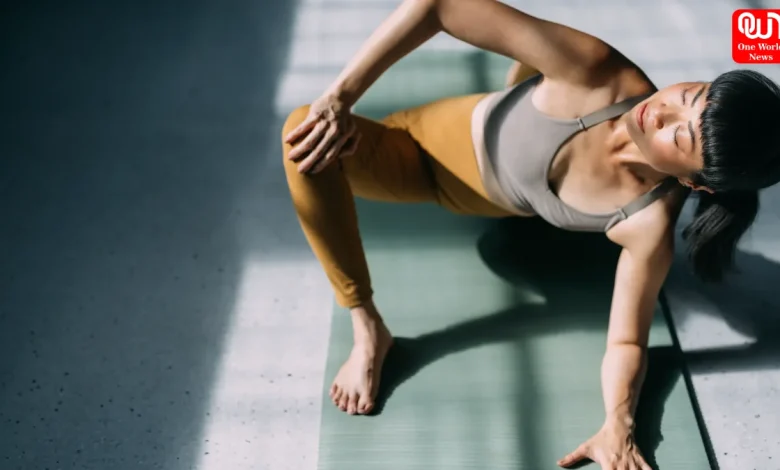5 Simple Pelvic Floor Exercises Every Woman Should Do For Better Core Strength

5 Simple Pelvic Floor Exercises Every Woman Should Do For Stronger Core Muscles, Better Bladder Control, and Improved Health
Pelvic floor exercises are essential for women of all ages to maintain a strong core, improve bladder control, and support overall pelvic health. These exercises target the muscles that hold your bladder, uterus, and bowel in place. Whether you’re recovering from childbirth, entering menopause, or simply aiming to enhance your strength, practicing regular Pelvic Floor Exercises can make a significant difference.
Why Pelvic Floor Exercises Are Important
The Role of the Pelvic Floor
The pelvic floor is a group of muscles that stretch from the pubic bone to the tailbone. These muscles provide essential support for the bladder, uterus, and rectum. Over time, factors like aging, pregnancy, childbirth, and lack of exercise can weaken them. Strengthening these muscles helps prevent issues such as urinary incontinence, pelvic organ prolapse, and reduced sexual satisfaction.
Read more: Did You Know Rice Water for Nails Can Make Them Stronger? 7 Amazing Benefits You Should Try
Benefits of Doing Pelvic Floor Exercises
Regularly performing Pelvic Floor Exercises offers numerous benefits for women. It enhances bladder and bowel control, improves posture, and supports the lower back. These exercises also increase core stability, reduce the risk of pelvic pain, and can even boost confidence in daily activities. Many women also find an improvement in intimacy and overall body awareness.
1. Kegel Exercises
How to Perform Kegel Exercises
Kegel exercises are the most well-known form of Pelvic Floor Exercises. To do them, contract your pelvic floor muscles as if you’re trying to stop urinating midstream. Hold the contraction for five seconds, then relax for another five seconds. Repeat this process ten to fifteen times, gradually increasing the duration as your muscles get stronger.
Benefits of Kegel Exercises
Kegels help strengthen the muscles responsible for bladder and bowel control. They are especially beneficial after childbirth or for women experiencing mild urinary leakage. Practicing Kegel exercises consistently can lead to stronger pelvic muscles and better overall pelvic health.
2. Bridge Pose
How to Perform Bridge Pose
Lie on your back with your knees bent and feet flat on the floor. Keep your arms by your sides. Slowly lift your hips toward the ceiling while squeezing your glutes and engaging your pelvic floor muscles. Hold the position for a few seconds, then lower your hips back down. Perform 10–12 repetitions.
Benefits of Bridge Pose
Bridge pose strengthens your glutes, lower back, and pelvic floor simultaneously. It improves stability and promotes better alignment of the spine. Regular practice enhances blood circulation in the pelvic region, supporting muscle recovery and endurance.
3. Squats
How to Perform Squats
Stand with your feet shoulder-width apart and your toes slightly pointed outward. Lower your body as if sitting in a chair, keeping your chest lifted and knees aligned with your toes. As you lower down, engage your pelvic floor and core muscles. Rise back up slowly and repeat 10–15 times.
Benefits of Squats for Pelvic Floor
Squats are powerful Pelvic Floor Exercises that strengthen multiple muscle groups including the hips, thighs, and glutes. They help stabilize the pelvic region, reduce lower back tension, and improve posture. Squats also encourage better coordination between the core and pelvic muscles.
4. Deep Belly Breathing
How to Perform Deep Belly Breathing
Sit or lie comfortably with one hand on your chest and the other on your abdomen. Inhale deeply through your nose, allowing your abdomen to rise while keeping your chest still. As you exhale through your mouth, gently engage your pelvic floor muscles. Continue this controlled breathing for 5–10 minutes.
Benefits of Deep Belly Breathing
This gentle exercise connects breathing with pelvic engagement, improving muscle awareness and relaxation. It helps relieve pelvic tension, supports stress reduction, and enhances oxygen flow to your muscles. Deep belly breathing can be performed anytime, making it a versatile Pelvic Floor Exercise for daily practice.
5. Wall Sit
How to Perform Wall Sit
Stand with your back against a wall and feet hip-width apart. Slide down until your knees form a 90-degree angle, as if sitting in an invisible chair. Engage your pelvic floor and hold this position for 20–30 seconds. Breathe deeply throughout, then slowly return to standing. Repeat 3–5 times.
Benefits of Wall Sit
Wall sits strengthen your pelvic floor, thighs, and core muscles. They improve endurance, stability, and coordination. Regular practice helps reduce pelvic fatigue and supports better posture. Combining wall sits with breathing exercises amplifies the benefits for overall pelvic health.
Tips for Effective Pelvic Floor Training
Be Consistent and Patient
Consistency is key when practicing Pelvic Floor Exercises. Results may take a few weeks, but persistence will lead to noticeable improvements in strength and control.
Avoid Over-Tightening
Avoid holding your breath or clenching your abdomen too tightly during exercises. Focus on gentle, controlled movements to prevent muscle strain.
Read more: Creative DIY Engagement Ring Tray Decoration Ideas for a Memorable Celebration
Seek Professional Guidance
If you’re unsure whether you’re performing the exercises correctly, consult a physiotherapist or women’s health specialist. They can guide you with personalized techniques to strengthen your pelvic floor safely.
Conclusion
Incorporating Pelvic Floor Exercises into your daily routine can greatly improve your quality of life. From enhancing bladder control and posture to boosting core stability and confidence, these simple yet powerful exercises offer long-term health benefits. Whether you’re recovering post-pregnancy, preparing for menopause, or maintaining overall wellness, a few minutes a day can make a big difference. Start today and empower your body from within.
We’re now on WhatsApp. Click to join.
Like this post?
Register at One World News to never miss out on videos, celeb interviews, and best reads.







